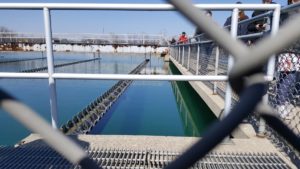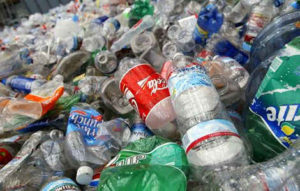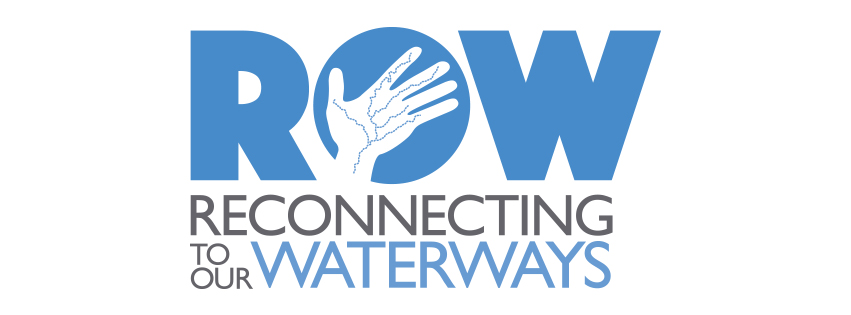I Heart Water
Reconnecting to Our Waterways works to engage and connect the Indianapolis community with our local waterways everyday. Water is a source of recreation and beauty but is also a key component for all living things. We rely on local waterways, such as the White River and Fall Creek, as sources for our drinking water. One of the biggest plagues our waterways face here in Indianapolis and all over the world is the sheer amount of plastic waste that is present, much of which comes in the form of plastic water bottles.
Buying and consuming mass produced plastic water bottles that end up right polluting our water sources seems a bit ironic, right? But many people consume bottled water due to the fear that tap water is dangerous for consumption. While sometimes this may be the case thankfully here in Indianapolis there are many precautions taken by Citizens Energy Group to ensure the tap water supplied to our homes and buisnesses is safe to drink.
ROW and the Central Canal committee are happy to present the I Heart Water campaign. Get the ROW I Heart Water branded nalgene bottle at ROW Events (Image of bottle to be inserted to the left of this paragraph) and help to educate yourself and others about the benifits of drinking local water .
Indianapolis Drinking Water
Did you know that a large majority of Indianapolis’ drinking water is sourced from the White River via the Central Canal? Built between 1836 and 1839, the Indiana Central Canal is now an important part of the water supply of Indianapolis. Starting in Broad Ripple just south of 64th Street, the Canal moves water from the White River about 6.5 miles to Citizens White River Treatment Plant off 16th Street just west of downtown. The downtown section of the Canal from 11th to the White River, which is owned by the City of Indianapolis, is not part of the water distribution system.
Treating Our Water

To ensure tap water is safe to drink, the U.S. Environmental Protection Agency (EPA) prescribes regulations which limit the amount of certain contaminants in water provided by public water systems. Food and Drug Administration (FDA) regulations establish limits for contaminants in bottled water which must provide the same protection for public health. Drinking water, including bottled water, may reasonably be expected to contain at least small amounts of some contaminants. The presence of contaminants does not necessarily pose a health risk.
Groundwater treatment plants aerate and filter water to remove dissolved iron and manganese. Chlorine is added to destroy any bacteria present and to maintain a level of disinfectant as the water travels through the distribution system. Fluoride is added to help strengthen resistance to cavities in teeth. A small amount of ammonia is used to minimize byproducts of the disinfection process and to enable chlorine to persist longer in the distribution system.
Lead and Copper
Citizens Energy Group regularly tests drinking water for lead and copper and takes steps in its treatment process to ensure corrosive elements do not result in elevated levels of lead and copper in customer tap water. Citizens does not have any active water mains containing lead. Rarely, elevated lead levels are found in isolated samples of tap water taken from customer homes with lead service lines or plumbing. Since each home has different plumbing pipes and materials, test results are likely to be different for each home tested for lead. It is important to note that most homes with lead service lines or plumbing do not have elevated levels of lead in the tap water.
Resources on Drinking Water
The information above was provideded by Citizen’s Energy Group and you can read more by visiting their website. If you have additional questions related to lead and copper in drinking water can call Citizens at 317-924-3311.
For more information about drinking water standards, visit the EPA’s website or call their Safe Drinking Water Hotline at (800) 426-4791.
What is so Wrong With Bottled Water?
- Making bottles to meet America’s demand for bottled water uses more than 17 million barrels of oil annually, enough to fuel 1.3 million cars for a year. And that’s not even including the oil used for transportation.

- The energy we waste using bottled water would be enough to power 190,000 homes.
- On an anual basis the average American uses 167 disposable water bottles, but only recycles 38.
- Americans used about 50 billion plastic water bottles last year. However, the U.S.’s recycling rate for plastic is only 23 percent, which means 38 billion water bottles – more than $1 billion worth of plastic – are wasted each year and end up in dumps, waterways, and oceans.
- The recommended eight glasses of water a day, at U.S. tap rates equals about $.49 per year; that same amount of bottled water is about $1,400.
- Antimony, which is found in PET plastic bottles, in small doses can cause dizziness and depression; in larger doses it can cause nausea, vomiting and death.
- Hydration at its best – carry the water you need and reduce your impact on the environment – one Nalgene bottle can last for decades, making it easy to stop buying single-serve bottled water to fulfill your everyday hydration needs.
- In the United States, 24 percent of bottled water sold is either Pepsi’s Aquafina (13 percent of the market) or Coke’s Dasani (11 percent of the market). Both brands are bottled, purified municipal water.
- There is an estimated 315 Billion pounds of plastic in our oceans and that number continues to increase.
